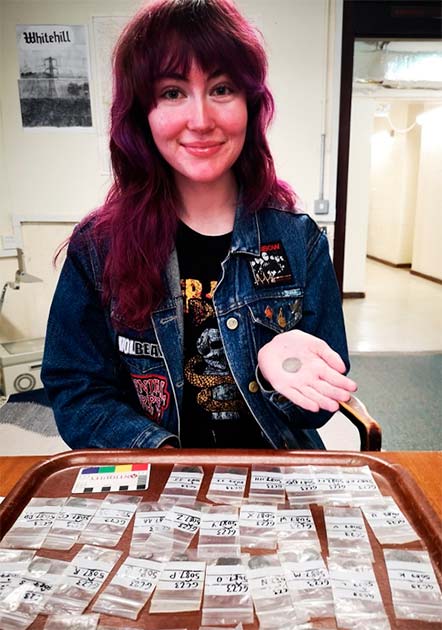In the heartlands of Scotland’s rugged west coast, an archaeology student unearthed a trove of 17th-century artifacts, including an “international coin hoard.” Believed to have been hidden after the Glencoe massacre, the coins illustrate one of the most haunting chapters in the nation’s history.
The somber events of this dark chapter in Scottish history unfolded on the fateful morning of 13 February 1692, in Glencoe. The MacDonald clan had previously aided the 1689 effort to restore the Catholic James II of England, Ireland, and VII of Scotland to the throne. This loyalty to the Catholic monarchs, in contrast to the Protestant ascendancy, made them a prime target.
Following the first Jacobite rising, in an attempt to reinstate King James, government forces deceitfully posed as guests in Glencoe. In a brutal and treacherous act, they mercilessly murdered around 80 members of the MacDonald clan, violating the sacred Scottish hospitality code. Among the victims were clan chief Maclain, and his wife. The senseless slaughter shocked the nation, igniting a profound and lasting rage.
Now, according to a report in BBC, “a hoard of 36 coins,” linked with this horrific event has been discovered underneath a fireplace that once belonged to the Macdonald Clan chief.
Stashing the Glencoe Hoard and Running
The collection of coins was found by student archaeologist, Lucy Ankers, during a University of Glasgow dig in August. She identified the stash in what was at one time a large stone fireplace within Maclain of Glencoe’s summerhouse. Ankers told The Guardian “I don’t think I will ever beat the feeling of seeing the coins peeking out of the dirt in the pot.”

Lucy Ankers, the university scholar who unearthed the Glencoe hoard, studying the coins in a laboratory at the University of Glasgow. (©Gareth Beale/University of Glasgow)
A report in The Guardian says that alongside the silver and bronze coins dating from the 1500s to 1680s, the team of researchers found “European pottery, pottery from England, Germany and the Netherlands, a musket and fowling shot, and the flint and gunpowder from a rifle.”
Among the currency were coins from the reigns of “Elizabeth I, James VI and I, Charles I, the Cromwellian Commonwealth, and Charles II – as well as France and the Spanish Netherlands and the Papal States was also found.”
Dr Michael Given, the co-director of the University of Glasgow’s archaeological project in Glencoe, speculates that whoever hid the coins, was killed during the massacre, and failed to return for them.
Glimpsing a Historic Massacre
In January 1692, led by Robert Campbell of Glenlyon, around 120 soldiers from the Earl of Argyll’s Regiment marched to Glencoe from Invergarry. Glasgow University archaeologists have speculated that the coins may have been buried two weeks later, on the morning of the massacre, “by survivors fleeing up a side glen during a blizzard,” where they found “Maclain” of Glencoe’s summerhouse.
Dr Michael Given said the coins and other finds, offer “a rare glimpse” into this historic massacre. Moreover, Given said it is “really exciting” to consider these coins “are no later than the 1680s,” confirming they were buried in a rush, as the massacre started on the morning of 13 February 1692. Dr Given said it is known some of the survivors escaped up side glens through a wild blizzard, therefore, these coins “witnessed the dramatic story”.
The Workings of Scotland’s Elites
While the coins speak of betrayal and religious violence, in a larger context, the discovery of Maclain’s Glencoe summer residence [hunting lodge] allows the researchers to better understand how the uplands served Scotland’s 17th-century societal elites. Upland hunting lodges were strategically located in remote, elevated areas, where they served as bases for hunting expeditions. Furnished with basic amenities and staffed, they were central to expedition planning and provided a place to unwind and strategize after a day of hunting, generating a sense of community among hunting enthusiasts.

The Massacre of Glencoe by James Hamilton, 1853–1894. (Glasgow Museums /CC-BY-NC-ND 4.0)
The Glencoe Massacre of 1692 stands as a horrifying testament to political betrayal and violence. Government soldiers, exploiting trust and hospitality, brutally slaughtered dozens of innocent members of the MacDonald clan. In the aftermath, Scotland was shocked, and tensions soared, and the betrayal fueled deep-resentment, leaving an open wound on the nation’s conscience that would shape its history and politics over the preceding two centuries.